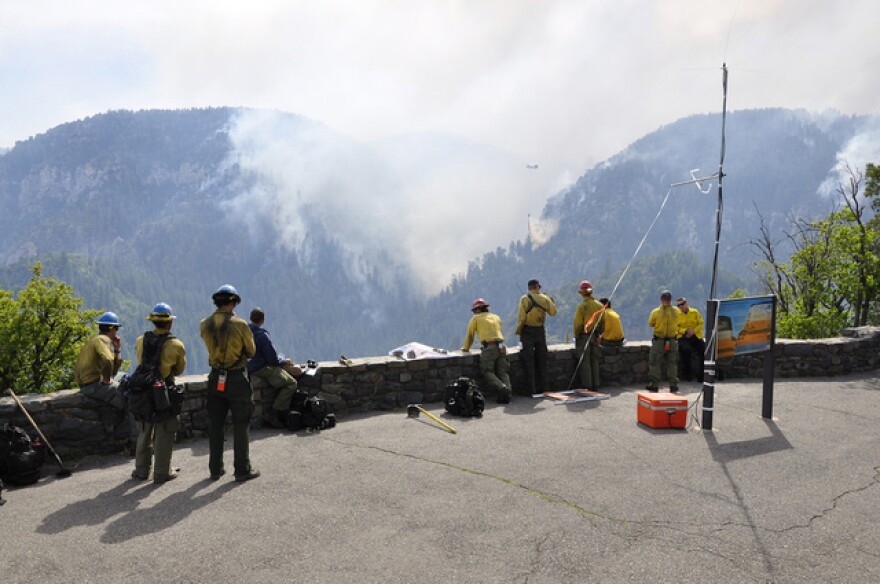When fighting the Slide Fire one year ago, crews had to negotiate some of the most challenging terrain in the Southwest along with extremely dry and windy conditions. The 21,000-acre fire became the largest in the history of the Coconino National Forest, and more than a thousand personnel were called in to fight it. Arizona Public Radio’s Ryan Heinsius recently spoke with Coconino National Forest Fire Staff Officer Don Muise about how what officials and firefighters approached battling the blaze and what they took away from the experience.
Ryan Heinsius: How did the Slide Fire compare to other large wildfires you’ve seen? Was there anything unusual about it?
Don Muise: I think the first thing that comes to mind is the difficulty of the terrain, which is extremely steep. If you take a look in Oak Creek Canyon or the West Fork of Oak Creek, that’s very, very difficult terrain — almost vertical walls of rock and then with stringers of vegetation in between the rock that carries the fire. We had very dry, very low humidity and a lot of breeze and wind in there, and those canyon effects make it very difficult for us.
RH: One year later, how do forest managers view the Slide Fire? Did it change how firefighters approach large catastrophic wildfires in any way?
DM: You know, for the Coconino National Forest probably not a whole lot, although there some things that we learned from the Slide Fire and that we’ll continue to take on. The Slide Fire was one of those fires that none of us wanted, obviously, but we’d been preparing for that fire for quite some time, and really had a plan in place before the fire started.
RH: When preparing to battle the Slide Fire, what was the strategy forest managers took?
DM: Our strategy was full suppression, but with that caveat that our number one objective was to make sure that people, including firefighters and the public, were safe. And being in red flag both May 20 and May 21 challenged those resources; we just couldn’t get out ahead of that curve.
RH: There were no fatalities and no reported injuries. Did it reveal anything to fire managers about how to keep crews safe?
DM: Well, we had a lot of discussions about exposing our firefighters in the canyon. There was areas in that canyon that potentially we could have put some folks in, but it was just not deemed — when you do your risk assessment, not worth the exposure. Again, our number one objective is firefighter and public safety, so we met that objective.
RH: What do local hotshots specialize in? What are their specific skills acquired from working in the terrain of northern Arizona?
DM: They’re a valuable resource for us. They’re a 20-person crew with really good leadership. They’re the best of the best; they’re the best crews we have out there. They know fire and know how to burn very well. They’ll use fire to fight fire better than anybody in the country because we do that a lot. And they’re looked to as the experts. They’re really a strength — the backbone of how we get work done on a fire. I depend on them immensely.
RH: Fast forward a couple years, five years, 10 years. What will be the Slide Fire’s ultimate legacy?
DM: Well, I’m hoping that it is the biggest fire that the Coconino will ever see. We have a lot of fires on this forest as it is — we have anywhere from 250 to 450 fires a year. We will continue to have fires. We’re very successful in stopping most of those fires at very small acreage. But every once in a while there’ll be fires in areas we’re going to be challenged with. If you think about the Slide Fire at this time, we’ve got a 20,000-acre fire buffer now that wasn’t there before. And so, there’s some positive that come out of there.









